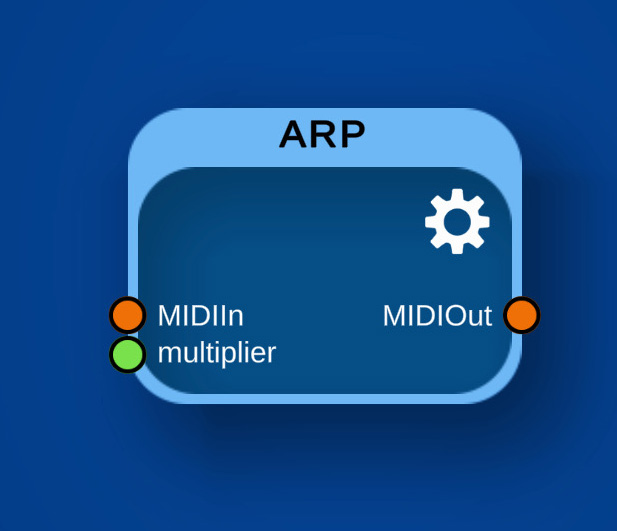Arpeggiator
A simple arpaggiator with the usual patterns, selectable velocities for each step.
You can also define how many times a note is repeated and if notes of additional octaves should be filled in. And by connecting anything to the multiplier input port, you can control by how much all velocities are multiplied.
By combining multiple arpeggiators (and maybe with other effects like the chord splitter, the channel switcher and the transposer), you can create complex setups.
Ports:

Any notes sent into here will be used for the arpeggiator to step through.
By connecting any value output ports to this, you can control by how much all the velocities are multiplied. With this you can dynamically change the stength of the velocities while playing.
This will send out the notes generated by the arpeggiator.
Settings:
Name: Change the name of this so that you can identify it if you have multiple controls.
Synchronize with global timeline: Enable this if you want to sync the arpeggiator with the global timeline (the one you see if you go to the global settings in the editor and enable the Timeline setting). Once enabled, the arpeggiator will only play if you press play on that timeline control.
Tempo: The local tempo of the arpeggiator (if not synced with the global timeline).
Time signature: The local time signature: How many steps per beat should be played?
Octaves: If this is higher than 0, then each note is also added in the higher octaves.
Repetitions: How many times should each note be repeated?
Reset pattern on sequence end: If this is activated, then the pattern will restart each time the first step is reached again. If not, it will simply continue the pattern.
Number of steps: The number of steps. For each step, there will be a velocity slider that you can control.
Note length: The length of each note. If this is larger than 100%, then the notes will overlap if possible (useful for example when playing legatos).
Multiplier input range: The range of the multiplier input values, so that the range can be mapped to the output values.
Inverted input range: If checked, the values from the multiplier input are inverted, so large values become small ones in the output.
Velocity multiplier target range: This defines the output range to which the multiplier input range is mapped. Change these if you do not want the velocities to become too low or too high after changing the multiplier.

